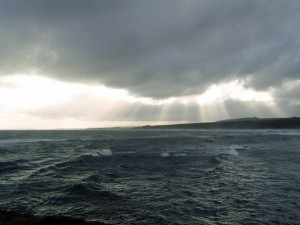“A stupid despot may constrain his slaves with iron chains; but a true politician binds them even more strongly by the chain of their own ideas… on the soft fibers of the brain is founded the unshakable base of the soundest of Empires.”
—Joseph Servan (1780)
“All social life is essentially practical. All mysteries which lead theory to mysticism find their rational solution in human practice and in the comprehension of this practice.”
—Karl Marx (1845)
“Space is political. Space is not a scientific object removed from ideology or politics; it has always been political and strategic.”
—Henri Lefebvre (1976)
Space and power are social relations and as such they are produced and reproduced through imbricated dimensions that are simultaneously material, ideal, and quotidian. In relation to space, Lefebvre defines this conceptual framework as a de-fetishized “unitary theory” of space (Lefebvre 1991). Building from dialogues with the Situationists—and older threads of Marxist and Hegelian thought—what makes his theory “unitary” is that it cuts through crude dichotomies between idealism and materialism and their corresponding deterministic extremes of culturalism and economism (Gregory 1994). By taking seriously the materiality and ideality of space and its embeddedness in the social relations of embodied, everyday human practices, Lefebvre makes it analytically possible to explore space as a historically situated “social product” and a “concrete abstraction.”
 Lefebvre argued that with capitalism space appears entirely devoid of all social relationships—a sort of thing of all things (Lefebvre 1991; Gregory 1994; Soja 1989). And taken to its most fetishized, mystified vanishing point, space becomes a non-thing an empty, static plane upon which people act and events unfold. Indeed, the most insidious aspect of the relations between space and power is that they appear to have no relation at all; space is always-already presumed innocent. Critical geography, however, demands that we examine how space and power work in tandem, with each being produced in mutual reciprocation. As Lefebvre explains, “Space is a social morphology: it is to lived experience what form itself is to the living organism, and just as intimately bound up with function and structure” (1991:94).
Lefebvre argued that with capitalism space appears entirely devoid of all social relationships—a sort of thing of all things (Lefebvre 1991; Gregory 1994; Soja 1989). And taken to its most fetishized, mystified vanishing point, space becomes a non-thing an empty, static plane upon which people act and events unfold. Indeed, the most insidious aspect of the relations between space and power is that they appear to have no relation at all; space is always-already presumed innocent. Critical geography, however, demands that we examine how space and power work in tandem, with each being produced in mutual reciprocation. As Lefebvre explains, “Space is a social morphology: it is to lived experience what form itself is to the living organism, and just as intimately bound up with function and structure” (1991:94).
Lefebvre’s critical approach to spatiality offers important cues for identifying the tangled workings of power in its heterogeneous forms. Whether as subjection, domination, exploitation and whether repressive or productive, power relations are implicitly spatial and are constituted by an ensemble of material, ideal, and everyday-social interactions. More so than Lefebvre, Foucault challenges us to examine power—including its modalities, techniques, institutional forms, and mechanisms—at its specific sites of operation; that is, where power is actually constituted, exercised, and resisted. Explicitly drawing from Marx, Foucault describes this heterogeneity in eloquent spatial terms: “Society is an archipelago of powers” (Foucault 1976 in Crampton and Elden 2007). His situated understanding of power relations gives his ideas on modern political government and its technologies of power deeply spatial sensibilities in which sovereignty, discipline, biopolitics, and government are associated with more or less distinct “fields” of operation that correspond, respectively, to territory, the body, population/milieu, and subjects. Governmentality describes the correlation of these various powers through the practices, institutional forms, and discourses of modern political government. In this framework, spatiality and power in all their material, ideological, and everyday manifestations are always inseparable and reciprocal.
 Governmentality also helps analytically parse “government” and “the state.” If not in these exact terms, Lefebvre’s contention that the state is a “realized abstraction” and Gramsci’s theorizations of the “integral state” make similar analytic distinctions between state and government. In a note on “Statolatry,” Gramsci writes: “The individual can govern himself without his self-government coming into conflict with political society—but rather becoming its normal continuation, its organic compliment” (1971:268). This bears striking conceptual resemblance to what Foucault called the “governmentalization of the state,” a defining feature of governmentality (2007:107-108).
Governmentality also helps analytically parse “government” and “the state.” If not in these exact terms, Lefebvre’s contention that the state is a “realized abstraction” and Gramsci’s theorizations of the “integral state” make similar analytic distinctions between state and government. In a note on “Statolatry,” Gramsci writes: “The individual can govern himself without his self-government coming into conflict with political society—but rather becoming its normal continuation, its organic compliment” (1971:268). This bears striking conceptual resemblance to what Foucault called the “governmentalization of the state,” a defining feature of governmentality (2007:107-108).
Foucault repeatedly shows how space is an integral part of the meshes of modern power and government. But powerful as the built environment may be in configuring social relations, particularly in terms of military strategies and space itself as medium of warfare (Weizman 2007), his considerations of space are often implicitly limited to the structural materiality of spatial organization—most famously, the prison panopticon and the plague-ridden town. In most cases, the work of Harvey (2001, 2006) is similarly prone, for totally different reasons, to the conceptual costs of an overly materialist analysis of space. Lefebvre and Massey (1994), by contrast, exhibit a much broader, more dynamic, and more relational notion of space and sociality. And, like Donald Moore, they are also much more attentive to the ways in which previous political struggles remain living sediments of contemporary socio-spatial morphologies (Moore 2005).
Although both Foucault and Gramsci are theoretically cognizant of the way people become enlisted by and enlist themselves into formations of rule, Gramsci’s foregrounding of political struggle makes his conception of rule through “hegemony” a much more elastic process of consent and coercion. Many authors tend to overemphasize “consent” in the workings of hegemony (Guha 1997; Laclau and Mouffe 1985), but Gramsci used the concept to describe a fluid process of struggle through which certain social relations are naturalized and coercively enforced, while others are made unviable and even unthinkable (Gramsci 1971; Hall 1987; Williams 1977). As William Roseberry suggests, “I propose that we use the concept [of hegemony] not to understand consent but to understand struggle” (Joseph and Nugent, eds. 1994: 360). Struggles are what make hegemony such a dynamic and elastic social process. And the three-part production of space should be seen as a constitutive alloy of hegemony as an ongoing, contingent, and always-incomplete process (Williams 1977).
 Indeed, the notion of the production of space depends in fundamental ways on Gramsci’s reworking of hegemony (Lefebvre 1991:10). But understanding power within a spatial prism reveals hegemony’s inherent instabilities, particularly in light of Lefebvre’s emphasis on the “hypercomplexity” of social space; that is, the tendency for multiple social spaces to superimpose, overlap, nest, and interpenetrate (Lefebvre 1991:88). Spatiality itself is often an assemblage of competing hegemonies, but not necessarily in arrangements that are anathema to projects of accumulation and rule. Lefebvre’s insight on this hypercomplexity compliments the ways in which “governable spaces” become constituted by the politico-strategic alignments and misalignments of multiple, intersecting, and overlapping territorialities (Watts 2005; cf. Rose 1999). This complex entanglement of territorialities is itself a product of the contradictions and synergies between accumulation and rule. Hypercomplex spatialities can cohere—in either fleeting or surprisingly durable ways—into novel territorialities, standing at often-awkward angles to normative conceptions of legality and statehood (Mbembe 2000, 2001; Roitman 2005).
Indeed, the notion of the production of space depends in fundamental ways on Gramsci’s reworking of hegemony (Lefebvre 1991:10). But understanding power within a spatial prism reveals hegemony’s inherent instabilities, particularly in light of Lefebvre’s emphasis on the “hypercomplexity” of social space; that is, the tendency for multiple social spaces to superimpose, overlap, nest, and interpenetrate (Lefebvre 1991:88). Spatiality itself is often an assemblage of competing hegemonies, but not necessarily in arrangements that are anathema to projects of accumulation and rule. Lefebvre’s insight on this hypercomplexity compliments the ways in which “governable spaces” become constituted by the politico-strategic alignments and misalignments of multiple, intersecting, and overlapping territorialities (Watts 2005; cf. Rose 1999). This complex entanglement of territorialities is itself a product of the contradictions and synergies between accumulation and rule. Hypercomplex spatialities can cohere—in either fleeting or surprisingly durable ways—into novel territorialities, standing at often-awkward angles to normative conceptions of legality and statehood (Mbembe 2000, 2001; Roitman 2005).
Many geographers and political theorists draw a necessary relation between territory and the state—in however complex and contingent an association—in which territory as a practice and a concept is equated with state space (e.g. Agnew 1994; Brenner and Elden 2009; Foucault 2007; Schmitt 2006; Weber 2004). As a spatial and historical process, state formation is not only constituted by the social production of territory; the production of territory is at the same time a process of statecraft and an ongoing preoccupation of modern liberal states (Anderson 1991; Brenner and Elden 2009; Craib 2004; Joseph and Nugent 1994; Lefebvre 2009; Sassen 2006; Scott 1998; Vandergeest and Peluso 1995). The “production of territory” helps keep the material, ideal, and everyday manifestations of state formation in tension, while helping us think state space, governmentality, and hegemony together. But the politico-juridical defined space of the state is only one territory among many and not always the hegemonic one.
As a fundamentally strategic, political, and economic project, territory always maintains its dimensionality through the workings of hegemony. Territory is a political technology (Elden 2010); it is both medium and “result” of power-laden efforts to exercise strategic, social, and political-economic control over a circumscribed geographic space, including the subjects and things constituting it. As such, territory itself should not be circumscribed to the exclusive provenance of states, either practically or conceptually. Territory is a socio-spatial morphology that can be potentially leveraged—that is, actively produced—by a diverse set of actors and groups for a variety of political objectives. Indeed, in Latin America it has become the central political idiom of decoloniality for many contemporary social movements (e.g. Escobar 2008 among many others)—though it is just as important for understanding the activities of violent drug traffickers.
 Sovereignty, state, law, and territory have a longstanding association in lineages of western political thought (Bartelson 1995). For Foucault, this politico-juridical model of sovereignty is based on a crude conception of power as something that is invested, transacted, and surrendered (2003). He argues that the bourgeois contractual “theory of right” amounts to a relation of domination by consolidating the rights of the sovereign and making obedience a legal obligation. Foucault wants to rediscover “the blood that has dried in the codes”; he knows the theory of right obscures how sovereignty and law were “born in the blood and mud” of “real wars and actual battles” (2003:50-56). Indeed, amid Europe’s wars of territorial conquest—within the continent and beyond—the enemy-other became politically and historically cast in terms of an irreconcilable socio-biological threats. With sovereignty and the law bonded by war, the discourse of “race war” was turned inward against enemies internal to the social body.
Sovereignty, state, law, and territory have a longstanding association in lineages of western political thought (Bartelson 1995). For Foucault, this politico-juridical model of sovereignty is based on a crude conception of power as something that is invested, transacted, and surrendered (2003). He argues that the bourgeois contractual “theory of right” amounts to a relation of domination by consolidating the rights of the sovereign and making obedience a legal obligation. Foucault wants to rediscover “the blood that has dried in the codes”; he knows the theory of right obscures how sovereignty and law were “born in the blood and mud” of “real wars and actual battles” (2003:50-56). Indeed, amid Europe’s wars of territorial conquest—within the continent and beyond—the enemy-other became politically and historically cast in terms of an irreconcilable socio-biological threats. With sovereignty and the law bonded by war, the discourse of “race war” was turned inward against enemies internal to the social body.
For Schmitt, the friend-enemy distinction is the existential definition of “the political” and the starting point for his understanding of the state (2005). And like Foucault, Schmitt positions conquest (dispossession) as a constitutive event of the political and the creation of what he calls a nomos, defined as a socio-political spatial order: “Land-appropriation thus is the archetype of a constitutive legal process externally (vis-à-vis other peoples) and internally (for the ordering of land and property within a country). It creates the most radical legal title” (2003:47).
The division of the world into territorially circumscribed (terrestrial) states was a singular human achievement in Schmitt’s view, but he critiqued liberals for their expectation that the state evacuate enmity from the social body and from relations between states (2003, 2005). The danger, says Schmitt, is that this effectively criminalizes the inevitabilities of social conflict and war, creating no legal bounds for social hostility and its international corollary: wars of annihilation. According to Schmitt, the state’s role is to guarantee that conflict is bracketed in a way that avoids putting the legal order itself at risk. The mark of the sovereign is the decision over the exception, which is instituted to reset the conditions in which the political—within states or between them—can proceed without putting the state (or the nomos) in jeopardy; in other words, the suspension of the law for its own self-preservation.
 For these reasons, the sea, the ship, and the seashore as non-sovereign spaces—and later airspace—presented difficult legal conundrums for western jurists, making them differential (or exceptional) spaces vis-à-vis territorialized state space. Not coincidentally, the pirate, as the ultimate territorial transgressor—bearing no national allegiances and harbored by the sovereign-less seas—was the original “enemy of all” (Heller-Rozen 2009). Schmitt designates pirates, rebels, and barbarians, and other territorial transgressors as “unjust enemies” because they pose a direct threat to the state-based territorial nomos itself. They are not only outside the law in a negative sense; they are also its greatest threat—in a word, outlaws. And, as “unjust enemies,” Schmitt calls for outlaws to be annihilated—the exception can apply to particular subjects and populations as much as spaces.
For these reasons, the sea, the ship, and the seashore as non-sovereign spaces—and later airspace—presented difficult legal conundrums for western jurists, making them differential (or exceptional) spaces vis-à-vis territorialized state space. Not coincidentally, the pirate, as the ultimate territorial transgressor—bearing no national allegiances and harbored by the sovereign-less seas—was the original “enemy of all” (Heller-Rozen 2009). Schmitt designates pirates, rebels, and barbarians, and other territorial transgressors as “unjust enemies” because they pose a direct threat to the state-based territorial nomos itself. They are not only outside the law in a negative sense; they are also its greatest threat—in a word, outlaws. And, as “unjust enemies,” Schmitt calls for outlaws to be annihilated—the exception can apply to particular subjects and populations as much as spaces.
Agamben (2005) draws almost entirely on Schmitt, but adds that in modern forms of government distinctions between legality and illegality, war and peace, exception and the norm have become utterly blurred; the exception as indistinction has become a paradigm of government. The state itself has become the outlaw, a “killing machine” (2005:86). But Mbembe shows how the power to make live and let die that Foucault dubbed biopolitics—the power over life itself—has combined with Agamben’s state of exception, though not necessarily in ways managed exclusively by states (2000, 2001, 2003). Building on colonial histories and sedimented racisms, new territorial configurations of “private indirect government,” privatized sovereignty, and violent regimes of extraction have emerged in which territorial states need not be the principle organizational spatial referent.

Pingback: Geographies of the Outlaw | Territorial Masquerades